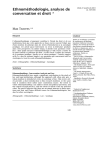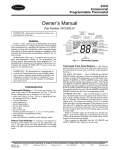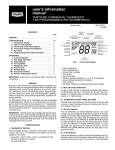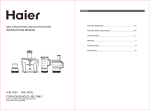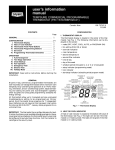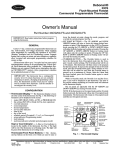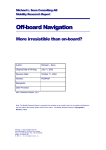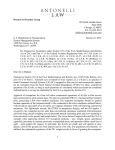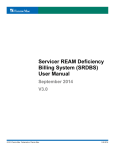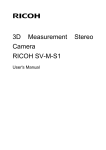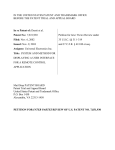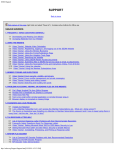Download before the patent trial and appeal board
Transcript
UNITED STATES PATENT AND TRADEMARK OFFICE _______________ BEFORE THE PATENT TRIAL AND APPEAL BOARD _______________ SQUARE, INC. Petitioner, v. UNWIRED PLANET, LLC Patent Owner _______________ Case CBM2014-00156 Patent 7,711,100 _______________ PETITIONER’S RESPONSE TO PATENT OWNER’S OBSERVATIONS ON CROSS-EXAMINATION OF DR. MICHAEL SHAMOS Mail Stop Patent Board Patent Trial and Appeal Board U.S. Patent and Trademark Office P.O. Box. 1450 Alexandria, VA 22313-1450 Case CBM2014-00156 Patent 7,711,100 Pursuant’s to the Board’s May 5, 2015 Revised Scheduling Order, Paper 24, Petitioner submits the following Response to Patent Owner Unwired Planet LLC’s Observations on cross-examination of Dr. Michael Shamos (Paper 30). Response to Observation 1: PO cites to Dr. Shamos’s testimony that he did not talk to Jim Procter (Petitioner’s other expert) and argues that this testimony is relevant to admissibility under FRE 402, 403 and 702. This testimony is not relevant to any issue, including whether the challenged claims of the ’100 patent are directed to statutory subject matter. Petitioner objects to Observation 1 as improper under the Board’s rules on observations on cross-examination. Section L of the Office Patent Trial Practice Guide regarding Observations on CrossExamination states that: “An observation (or response) is not an opportunity to raise new issues, re-argue issues or pursue objections.” 77 Fed. Reg. 48755, 48768 (August 14, 2012). PO’s Observation 1 attempts to pursue its objection to Petitioner’s submission of Dr. Shamos’s declaration. As such, Observation 1 should be disregarded as improper and irrelevant. Response to Observation 2: In Observation 2, PO cites Dr. Shamos’s testimony that the challenged claims of the ’100 patent do not require location finding technology based on the literal words of the claim as being contrary to the broadest reasonable interpretation of the claim. Dr. Shamos’s opinions are consistent with the Board’s Institution Decision that “the claims are not written narrowly to require 2 Case CBM2014-00156 Patent 7,711,100 the use of such [locating] technology.” (Paper 11 at 15). Dr. Shamos also testified that he agreed that the claims have to be construed in light of the specification “so that one can understand what the meaning of the terms is.” (Ex. 2013, 23:16-20). Paragraphs 36-45 of Dr. Shamos’s declaration (Ex. 1022) provide the basis for Dr. Shamos’s rebuttal to Dr. Chatterjee’s opinions and explain that the challenged claims do not require location finding technology. Response to Observation 3: In Observation 3, PO cites Dr. Shamos’s testimony that he did not review the patent owner response in preparing his declaration. This is not relevant to whether Dr. Shamos’s declaration is proper under 37 CFR § 42.23(b) because Dr. Shamos also testified that “I was asked to prepare a rebuttal to the declaration of Dr. Chatterjee. And I did that. I wrote it from – essentially from scratch.” (Ex. 2013, 19:5-7). In the context of answering a question about whether the claims of the ’100 patent claim an abstract idea, Dr. Shamos testified that: “The declaration is a rebuttal to the Chatterjee declaration. It does not wander off into topics that were not raised by Dr. Chatterjee.” (Ex. 2013. 42:19-22). Furthermore, PO’s observation appears to be another attempt at pursuing objections to Dr. Shamos’s declaration, in contravention of the Board’s rules on observations on cross-examination. Section L of the Office Patent Trial Practice Guide, 77 Fed. Reg. 48755, 48768. 3 Case CBM2014-00156 Patent 7,711,100 Response to Observations 4-6: In Observations 4-6, PO argues that Dr. Shamos’s testimony about what Dr. Chatterjee’s declaration states (Observations 4 and 6) and about an issue that was not addressed in Dr. Shamos’s declaration (Observation 5) is supposedly relevant to “the question of whether Dr. Shamos’s declaration is admissible as relevant under FRE 402 and 403, admissible as expert testimony under FRE 702, or is properly responsive under 37 CFR §42.23(b). Dr. Shamos’s testimony about what Dr. Chatterjee’s declaration says, or about an issue that was not addressed in Dr. Shamos’s declaration is not relevant to whether the challenged claims of the ’100 patent are directed to statutory subject matter. Petitioner objects to Observations 4-6 as improper under the Board’s rules on observations on cross-examination. Section L of the Office Patent Trial Practice Guide regarding Observations on Cross-Examination states that: “An observation (or response) is not an opportunity to raise new issues, re-argue issues or pursue objections.” 77 Fed. Reg. 48755, 48768 (August 14, 2012). PO’s Observations 46 attempt to pursue its objections to Petitioner’s submission of Dr. Shamos’s declaration. As such, Observations 4-6 should be disregarded as improper and irrelevant. Response to Observation 7: In Observation 7, PO argues that Dr. Shamos’s testimony about whether the claims purport to be limited to the use of a wireless device in a wireless network is relevant to whether Dr. Shamos properly applied 4 Case CBM2014-00156 Patent 7,711,100 the broadest reasonable interpretation of the claims in ¶¶ 18, 20, 22-24, 28 and 44 of Dr. Shamos’s declaration (Ex. 1022). With regards to whether the claims are limited to the use of a wireless device in a wireless network, Dr. Shamos repeatedly testified that he had not offered an opinion on that particular issue. (Ex. 2013, 54:11-55:5; 30:14-32:4). As Dr. Shamos explained in his deposition, “what’s going on here is that there is a well-known process, that is[sic] the claim purports to be moving to a wireless environment.” (Ex. 2013, 33:20-22). With regards to a wireless network, Dr. Shamos testified that a wireless network is not needed to practice the method of claim 1. (Ex. 2013, 34:20-35:11). With regards to a wireless device, Dr. Shamos testified that the ’100 claims could be interpreted as not requiring a wireless device. (Ex. 2013, 68:14-69:5). Dr. Shamos also testified that if the Board were to conclude that a wireless device is required to practice the method of claim 1 of the ’100 patent, the determining, obtaining, correlating and charging steps could be performed by a human using pen and paper because they “don’t mention any device.” (Ex. 2013, 69:6-20). Response to Observation 8: In Observation 8, PO argues that Dr. Shamos’s testimony about the nature of the display of the wireless device is relevant to whether Dr. Shamos properly applied the broadest reasonable interpretation of the claims in “the entirety of Dr. Shamos’s declaration and more particularly to ¶¶ 2122.” (Ex. 1022). Dr. Shamos’s interpretation of the claimed displaying step is 5 Case CBM2014-00156 Patent 7,711,100 within the broadest reasonable interpretation of the claim language because as he pointed out in his quoted testimony: “I think the device has to be capable of displaying.” (Ex. 2013, 62:14-15). Dr. Shamos also explained that the claimed wireless device need not be “programmable at all.” (Ex. 2013, 62:6-10), and need not be capable of two-way communication. (Ex. 2013, 63:6-14). Dr. Shamos further explained the displaying that could be performed by such a unidirectional wireless device using a screen to perform the displaying step. (Ex. 2013, 63:1564:10). Response to Observation 9: In Observation 9, PO argues that Dr. Shamos’s testimony about the use of a screen in a unidirectional wireless device is relevant to whether Dr. Shamos properly applied the broadest reasonable interpretation of the claims in “the entirety of Dr. Shamos’s declaration and more particularly to ¶¶ 2122.” (Ex. 1022). Dr. Shamos’s interpretation of the claimed displaying step is within the broadest reasonable interpretation of the claim language because Dr. Shamos testified that the wireless device mentioned in the claims of the ’100 patent need not be capable of two-way communication, (Ex. 2013, 63:6-14). Dr. Shamos also testified that all steps of the method of claim 1 could be practiced using a walkie-talkie as of December 1997 (Ex. 2013, 75:5-76:6) because the “menu, the displaying of the menu, I thought there was even disclosure that it could be done verbally.” (Ex. 2013, 75:10-12). 6 Case CBM2014-00156 Patent 7,711,100 Response to Observation 10: In Observation 10, PO argues that Dr. Shamos’s testimony about the use of various ways to practice the method steps is relevant to whether Dr. Shamos properly applied the broadest reasonable interpretation of the claims. Dr. Shamos’s testimony is consistent with the broadest reasonable interpretation of the claims. As Dr. Shamos explained when asked whether the technology described at Ex. 2013, page 71, line 13 to page 72, line 4 existed as of December 1997, “I don’t know. But that’s the whole problem with preemption, is that you claim things that you haven’t invented, and no one’s invented yet.” (Ex. 2013, 72:5-12). With regards to the use of light beams for communication, Dr. Shamos gave the example of infrared networks used to communicate between buildings in New York City before December 1997. (Ex. 2013, 73-1-11). Response to Observation 11: In Observation 11, PO argues that Dr. Shamos’s testimony about point-of-sale locations is “relevant to ¶¶29-30 of Dr. Shamos’s declaration.” (Ex. 1022). PO’s observation omits the following testimony by Dr. Shamos that precedes the quoted testimony: “I haven’t offered construction on point-of-sale location. The board in its institution didn’t find it necessary to construe point-of-sale location.” (Ex. 2013, 66:10-13). Dr. Shamos also explained how this testimony applies to purchases made from online merchants at Ex. 2013, page 66, line 19 to page 67, line 16, and in particular testified: “The – there, if one were forced to identify a point-of-sale, it would be server that’s operated by 7 Case CBM2014-00156 Patent 7,711,100 Amazon that is accepting information from a user about what they want to order.” (Ex. 2013, 67:3-6). Response to Observation 12: In Observation 12, PO argues that Dr. Shamos’s testimony regarding whether the preamble of claim 1 is considered limiting is relevant to whether Dr. Shamos properly applied the broadest reasonable construction and his direct testimony in ¶¶21 and 41 of Ex. 1022 that “most (if not all) of the claimed steps could be performed by a human using pen and paper.” Dr. Shamos’s testimony is consistent with the broadest reasonable interpretation of the claims. Dr. Shamos testified that claim 1 could be interpreted as not requiring a wireless device. (Ex. 2013, 68:14-69:5). And, Dr. Shamos testified that even if the board concluded that a wireless device is required to practice the method of claim 1, the determining, obtaining, correlating and charging steps could be performed by a human using pen and paper because “[t]hey don’t mention any device.” (Ex. 2013, 69:6-15). Response to Observation 13: In Observation 13, PO suggests that Dr. Shamos’s testimony at page 70, lines 17-22 regarding “the particular point-of-sale location must be one of the ones that was displayed in the displaying step” is somehow inconsistent with Petitioner’s Reply at page 9, where Petitioner quotes a portion of the specification to state that: “The specification expressly contemplates an embodiment in which multiple menus are displayed, and those menus include at 8 Case CBM2014-00156 Patent 7,711,100 least one point of sale location, based on user-inputted location information.” (Petitioner’s Reply, p. 9 (citing Ex. 1001 at 8:33-37)). There is no inconsistency between Dr. Shamos’s testimony and Petitioner’s Reply. Dr. Shamos specifically testified how manual entry of a user’s location to display point of sale locations falls within the scope of the claims. (Ex. 2013, 91:8-92:9). Dr. Shamos also testified that “the determining step doesn’t even mention the wireless device. The wireless device doesn’t have to do the determining.” (Ex. 2013, 59:10-16). Response to Observation 14: In Observation 14, PO argues that certain testimony by Dr. Shamos is inconsistent with his assertion in ¶28 of Ex. 1022 that pagers did not have location determining technology. Dr. Shamos’s testimony is not inconsistent. In response to the question “Right, but telephone companies were capable as of December 1997 of locating the position of a two-way paging device within that network as of December 1997, right?, what Dr. Shamos testified was “If it were a cellular paging device, yes. There are plenty of paging devices that are not cellular.” (Ex. 2013, 77:11-17; emphasis added). PO’s Observation omits the second sentence of Dr. Shamos’s answer to argue an alleged inconsistency when there is none. Nor is Dr. Shamos’s testimony unreliable or inconsistent with the broadest reasonable interpretation of the claims because Dr. Shamos also testified that: “If the question is did telephone companies have technology that 9 Case CBM2014-00156 Patent 7,711,100 could detect where a pager was, they probably did. The pager itself did not have any location determining technology.” (Ex. 2013, 77:7-10). Response to Observation 15: In Observation 15, PO argues that Dr. Shamos’s testimony about a hypothetical embodiment using a LCD projector is relevant to whether Dr. Shamos properly applied the broadest reasonable construction in light of the specification. Dr. Shamos’s testimony is consistent with the broadest reasonable interpretation of the claims. Dr. Shamos was also asked the following question: “So is it your opinion that as of December 1997, one of ordinary skill in the art would have interpreted this method claim, claim 1, to including transmitting the correlated transaction amount to the wireless device for display to the user, as projecting, using an LCD projector, the correlated transaction amount onto a screen?” (Ex. 2013, 79:19-80:3). In response to this question, Dr. Shamos testified: “I’m not sure that they would have interpreted that that way if you asked them what does that mean. But then if you said, well, if I do it this way, would it fall within the scope of the claims, they could well say yes.” (Ex. 2013, 80:4-8). This testimony explains the reason behind Dr. Shamos’s hypothetical and is consistent with the broadest reasonable interpretation of the claims in light of the specification. Response to Observation 16: In Observation 16, PO suggests an inconsistency between Dr. Shamos’s testimony regarding Hertz’s NeverLost and ¶27 of Dr. 10 Case CBM2014-00156 Patent 7,711,100 Shamos’s declaration (Ex. 1022) and pages 7 and 11 of Petitioner’s Reply (Paper 25). Dr. Shamos’s testimony is entirely consistent because Dr. Shamos testified that as of December 1997, NeverLost was a conventional GPS navigation aid. (Ex. 2013, 87:21-88:1). And, Dr. Shamos explained that the claims do not even recite a step of determining a current location of the wireless device. (Ex. 2013, 88:1789:12). Response to Observation 17: In Observation 17, PO argues that Dr. Shamos’s testimony about a user’s manual entry of the location of the wireless device is inconsistent with ¶¶ 27, 28, 36 and 50 of Dr. Shamos’s declaration (Ex. 1022) and with pages 6, 8 and 9 of Petitioner’s Reply (Paper 25). Dr. Shamos testified that he cited NeverLost for the proposition that “fundamentally obtaining the current location of a wireless device was known and conventional already in 1995.” (Ex. 2013, 88:10-12). Dr. Shamos explained the basis for his opinion in ¶ 27 of his declaration that the manual entry of a user’s location would still fall within the scope of the claims, using the example of a user typing their zip code on a store locator function such as Best Buy. (Ex. 2013, 91:8-92:9). Further, Dr. Shamos did not agree that determining the current location of the wireless device was inherent in the claim limitation requiring displaying at least one point-of-sale location based on a current location of the wireless device: “Okay, so the displaying step requires that the stuff that you display to the user has to be based on a location of the 11 Case CBM2014-00156 Patent 7,711,100 wireless device. I agree with that. What you were asking is whether there is an inherent determining step, where a determination has to be made where the wireless device is. And the answer is no.” (Ex. 2013, 89:13-90:10). Response to Observation 18: In Observation 18, PO argues that Dr. Shamos’s testimony at page 98, line 19 to page 99, line 1 is relevant to Dr. Shamos’s opinions that the claimed invention is not a technical solution, and is relevant to Petitioner’s Reply that the patents do not solve a technical problem. (Paper 25, pp. 6-7). There is no inconsistency because PO’s partial quote omits Dr. Shamos’s testimony that: “I don’t agree that the method claimed in the patent is new. Because there were already websites that made use of the current location of the wireless device in order to make a display of point-of-sale locations. But I agree that it provides an advantage over other methods.” (Ex. 2013, 99:2-6). Response to Observation 19: In Observation 19, PO suggests that Dr. Shamos’s testimony regarding Dunworth are inconsistent with ¶¶38 and 48 of his declaration and pages 8 and 15 of Petitioner’s Reply (Paper 25). There is no such inconsistency because Dr. Shamos testified that: “There isn’t even a discussion of how the location of the wireless device needs to be determined. There isn’t even a step of determining it [the location of the wireless device]. So it’s not disclosed in the specification.” (Ex. 2013, 99:7-18). 12 Case CBM2014-00156 Patent 7,711,100 Response to Observation 20: In Observation 20, PO suggests that Dr. Shamos’s testimony about the exact number of embodiments disclosed in the specification is “relevant to whether there are multiple embodiments disclosed in the claims and whether all of the embodiments are covered by the challenged claims.” The cited portion of Dr. Shamos’s testimony relates to a question that PO’s counsel asked relating to a specific multiple menu embodiment in the specification discussed in ¶40 of Dr. Shamos’s declaration. (Ex. 2013, 105:10-21). This testimony is not relevant to whether multiple embodiments are disclosed in the claims or whether all embodiments in the specification are covered by the challenged claims. In response to a question whether the particular multiple menu embodiment discussed in his declaration at ¶40 was a preferred embodiment, Dr. Shamos testified: “I don’t know, but I’m not suggesting a claim construction that would read it out.” (Ex. 2013, 106:10-14). Response to Observation 21: In Observation 20, PO suggests that Dr. Shamos’s testimony about a particular embodiment is “relevant to whether there are multiple embodiments disclosed in the claims and whether all of the embodiments are covered by the challenged claims.” The cited testimony is not relevant to whether multiple embodiments are disclosed in the claims or whether all embodiments in the specification are covered by the challenged claims. The cited portion of Dr. Shamos’s testimony relates to a question that PO’s counsel asked relating to a 13 Case CBM2014-00156 Patent 7,711,100 specific multiple menu embodiment in the specification discussed in ¶40 of Dr. Shamos’s declaration. (Ex. 2013, 108:1-7). Dr. Shamos identified menu 407 as the menu listing at least one point of sale location based on a current location of the wireless device. (Ex. 2013, 108:1-8). And, in response to question about the determining step in relation to this multiple menu embodiment, Dr. Shamos testified: “The determining step doesn’t mention a menu.” (Ex. 2013, 108:9-19). Response to Observation 22: In Observation 22, PO suggests that certain cited testimony by Dr. Shamos is somehow inconsistent with ¶41 of his declaration, and also argues that it is relevant to differences in embodiments and whether all embodiments are within the scope of the challenged claims. There is no inconsistency between Dr. Shamos’s testimony and the statements in ¶41 of his declaration. Nor is there any relevance to the cited testimony regarding whether all embodiments are within the scope of the challenged claims. In response to PO’s question about why Dr. Shamos characterized the menus discussed in paragraph 41 of his declaration as a preferred embodiment, Dr. Shamos explained that he was referring to the specification’s quote from column 7, line 65 to column 8, line 4. (Ex. 2013, 109:13-110:11). Response to Observation 23: In Observation 23, PO suggests that certain testimony by Dr. Shamos is inconsistent with ¶41 of his declaration and argues that this testimony is relevant because it “relates to the issue of whether all of the 14 Case CBM2014-00156 Patent 7,711,100 multiple embodiments disclosed in the ’100 patent’s specification are within the scope of the challenged claims.” Dr. Shamos’s testimony is not relevant to whether all embodiments are within the scope of the claims. In response to a question about whether the displaying step of claim 1 would be met by an embodiment that displays all the point-of-sale locations in all categories, without regard to whether they fall within a particular geographic area, Dr. Shamos testified: “Interesting question. I haven’t looked at it before.” (Ex. 2013, 114:1920). Dr. Shamos did not testify that this embodiment wasn’t covered by the claims, only that the hypothetical that Dr. Shamos created on the fly during the deposition did not. (Ex. 2013, 115:5-22). Response to Observation 24: In Observation 24, PO cites to certain testimony by Dr. Shamos to argue that it is relevant to ¶¶ 42 and 28 of his declaration (Ex. 1022). Dr. Shamos’s testimony is not inconsistent with ¶ 42 of his declaration which states, in pertinent part, that: “Further, the Summary of the Invention states that the point of sale location can be identified by ‘entering a unique location identifier on the wireless device.’” (Ex. 1022, ¶ 42 (quoting Ex. 1001, 2:33)). Dated: July 14, 2015 MAYNARD COOPER & GALE LLP By:_______________________ Sasha G. Rao (Reg. 57017) 15 Case CBM2014-00156 Patent 7,711,100 [email protected] 275 Battery Street Suite 1350 San Francisco, CA 94111 Tel: 415.591.8223 Fax: 415.358.5650 Attorneys for Petitioner 16 Case CBM2014-00156 Patent 7,711,100 CERTIFICATE OF SERVICE The undersigned hereby certifies that the above-captioned PETITIONER’S RESPONSE TO PATENT OWNER’S OBSERVATIONS ON CROSSEXAMINATION OF DR. MICHAEL SHAMOS was served upon the following parties on July 14, 2015 via electronic mail: Timothy Bianchi (Lead Counsel) [email protected] Thomas Reynolds (Back-Up Counsel) [email protected] Brett Schuman (Back-Up Counsel) [email protected] Attorneys for Patent Owner Dated: July 14, 2015 MAYNARD COOPER & GALE LLP By:_____ __________________ Sasha G. Rao (Reg. 57017)



















